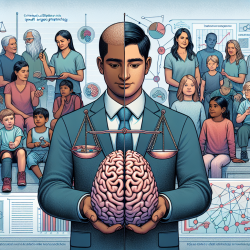Unlocking the Potential of Neuroscience in Speech Language Pathology
In the ever-evolving field of speech language pathology, data-driven decisions are crucial for creating optimal outcomes for children. One area that is gaining traction is the application of neuroscience findings to enhance therapeutic practices. A recent research article titled Neuroscience Nuance: Dissecting the Relevance of Neuroscience in Adjudicating Criminal Culpability offers insights that, while focused on criminal law, can also be adapted to benefit therapeutic interventions.
Understanding Neuroscience Evidence
The article categorizes neuroscience evidence into five types, with varying degrees of relevance in legal contexts. These categories, ranging from evidence of abnormality to individualized neuropsychological findings, provide a framework that can be adapted to speech language pathology. By understanding these categories, practitioners can better evaluate the neurological underpinnings of speech and language disorders.
Applying Neuroscience to Therapy
Here are some ways practitioners can implement neuroscience insights into their therapeutic practices:
- Evidence of Abnormality: Use brain imaging and neuropsychological testing to identify neurological impairments that may affect speech and language development. Understanding these abnormalities can guide tailored interventions.
- Cause-of-an-Effect Evidence: Research indicating common neurological impairments in specific disorders can help practitioners anticipate challenges and develop proactive strategies.
- Effect-of-a-Cause Evidence: Studies showing how neurological impairments predispose individuals to certain behaviors can inform the development of targeted therapies.
- Individualized Findings: Compare neuropsychological test results against known baselines to assess the specific needs of each child, allowing for more personalized and effective therapy plans.
Encouraging Further Research
While current research provides a foundation, there is a need for further studies to explore the direct application of neuroscience in speech language pathology. Practitioners are encouraged to stay informed about new findings and consider participating in research initiatives to expand the evidence base.
Conclusion
By integrating neuroscience insights into therapeutic practices, speech language pathologists can enhance their understanding of neurological influences on speech and language disorders. This approach not only improves therapy outcomes but also aligns with the commitment to data-driven decisions. To delve deeper into the original research paper, please follow this link: Neuroscience nuance: dissecting the relevance of neuroscience in adjudicating criminal culpability.










